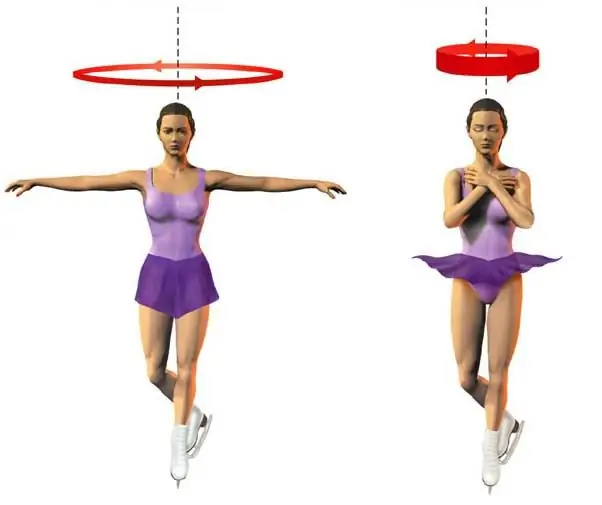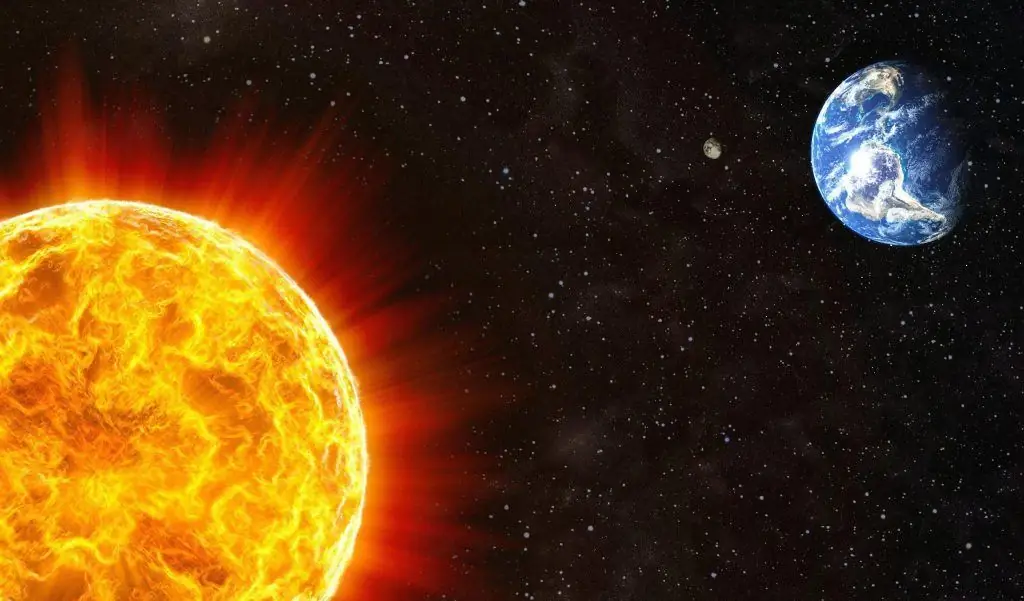Bodies making circular motions in physics are usually described using formulas that include angular velocity and angular acceleration, as well as such quantities as moments of rotation, forces and inertia. Let's take a closer look at these concepts in the article.
Moment of rotation about the axis
This physical quantity is also called the angular momentum. The word "torque" means that the position of the axis of rotation is taken into account when determining the corresponding characteristic. So, the angular momentum of a particle of mass m, which rotates with a speed v around the axis O and is located at a distance r from the latter, is described by the following formula:
L¯=r¯mv¯=r¯p¯, where p¯ is the momentum of the particle.
The sign "¯" indicates the vector nature of the corresponding quantity. The direction of the angular momentum vector L¯ is determined by the right hand rule (four fingers are directed from the end of the vector r¯ to the end of p¯, and the left thumb shows where L¯ will be directed). The directions of all named vectors can be seen on the main photo of the article.
WhenWhen solving practical problems, they use the formula for the angular momentum in the form of a scalar. In addition, the linear speed is replaced by the angular one. In this case, the formula for L would look like this:
L=mr2ω, where ω=vr is the angular velocity.
The value mr2 is denoted by the letter I and is called the moment of inertia. It characterizes the inertial properties of the rotation system. In general, the expression for L is written as follows:
L=Iω.
This formula is valid not only for a rotating particle of mass m, but also for any body of arbitrary shape that makes circular movements about some axis.
Moment of inertia I
In the general case, the value I entered in the previous paragraph is calculated by the formula:
I=∑i(miri 2).
Here i indicates the number of the element with mass mi located at a distance ri from the rotation axis. This expression allows you to calculate for an inhomogeneous body of arbitrary shape. For most ideal three-dimensional geometric figures, this calculation has already been made, and the obtained values of the moment of inertia are included in the corresponding table. For example, for a homogeneous disk that makes circular motions around an axis perpendicular to its plane and passing through the center of mass, I=mr2/2.
To understand the physical meaning of the moment of inertia of rotation I, one should answer the question about which axis it is easier to spin the mop: the one that runs along the mopOr one that is perpendicular to it? In the second case, you will have to apply more force, since the moment of inertia for this position of the squeegee has a large value.

Law of conservation of L
Change in torque over time is described by the formula below:
dL/dt=M, where M=rF.
Here M is the moment of the resulting external force F applied to the shoulder r about the axis of rotation.
The formula shows that if M=0, then the change in the angular momentum L will not occur, that is, it will remain unchanged for an arbitrarily long time, regardless of internal changes in the system. This case is written as an expression:
I1ω1=I2ω 2.
That is, any changes within the system of moment I will lead to changes in the angular velocity ω in such a way that their product will remain constant.

An example of the manifestation of this law is an athlete in figure skating, who, throwing out his arms and pressing them to the body, changes his I, which is reflected in a change in his rotation speed ω.
The problem of the rotation of the Earth around the Sun
Let's solve one interesting problem: using the above formulas, it is necessary to calculate the moment of rotation of our planet in its orbit.

Since the gravity of the rest of the planets can be neglected, and alsogiven that the moment of the gravitational force acting from the Sun to the Earth is equal to zero (shoulder r=0), then L=const. To calculate L, we use the following expressions:
L=Iω; I=mr2; ω=2pi/T.
Here we have assumed that the Earth can be considered a material point with mass m=5.9721024kg, since its dimensions are much smaller than the distance to the Sun r=149.6 million km. T=365, 256 days - the period of the planet's revolution around its star (1 year). Substituting all the data into the expression above, we get:
L=Iω=5, 9721024(149, 6109) 223, 14/(365, 256243600)=2, 661040kgm2 /s.
The calculated value of angular momentum is gigantic, due to the large mass of the planet, its high orbital speed and huge astronomical distance.






